Don’t Just Plant a Tree—Establish a Legacy: The Real Guide to Drought-Proofing Your Yard
I’ve seen the same sad story play out more times than I can count. A homeowner gets fed up with a crispy, brown lawn and soaring water bills. They head to the big-box store, grab a tree with a “drought-tolerant” tag, plop it in a tiny hole, and cross their fingers. Fast forward a couple of years, and I get the call. The tree they had such high hopes for is struggling, its leaves are scorched, and honestly, it looks worse than the lawn it was supposed to save.
In this article
Here’s the thing: the problem was never the tree. It was the process.
True drought tolerance isn’t some feature you buy off the rack. It’s a characteristic you have to cultivate. Think of it as a partnership between a smart tree and an informed owner. A genuinely resilient tree gets that way through proper planting and intelligent watering, especially in its first few years. This guide is the stuff I share with my clients—it’s not a magic list of trees that never need water. It’s about understanding how these amazing plants work and setting them up for a long, shady life, even when the rain disappears for a while.
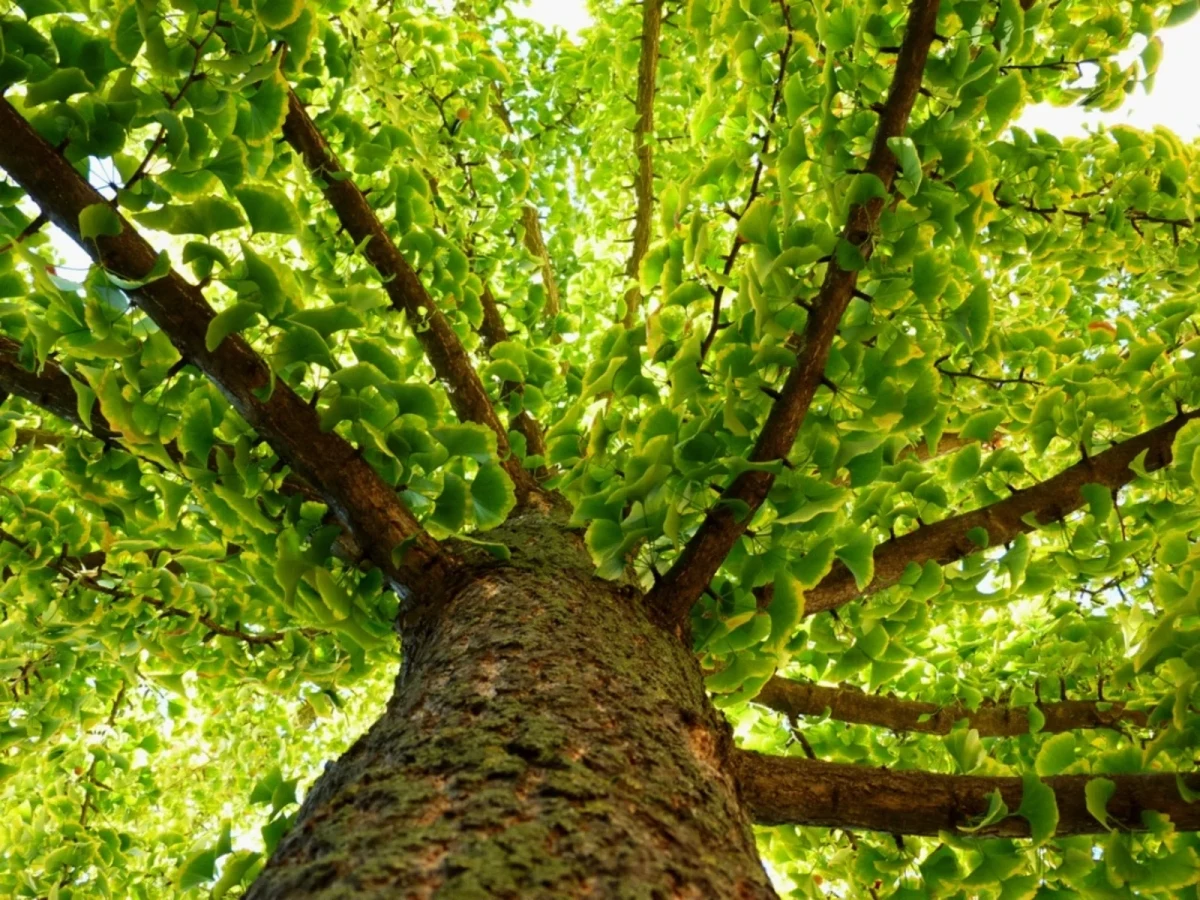
What Makes a Tree Tough, Anyway?
Before we get into specific trees, let’s talk about what that “drought-tolerant” tag actually means. It’s all about a tree’s built-in survival kit. Knowing this helps you pick the right one and care for it properly.
First up is the root system. Some trees are built like skyscrapers, sending a massive central taproot deep into the earth. This root can push way past the dry topsoil to find moisture that other plants can’t even dream of reaching. Other trees go wide, developing a dense, fibrous web of roots just under the surface. These are brilliant at soaking up every last drop from a quick summer shower. This is why, by the way, you should always water in a wide circle around the tree, not just at the trunk.
Next, take a look at the leaves. Trees lose water through tiny little pores in their leaves—it’s basically how they breathe and sweat. Trees adapted to dry climates have some clever tricks to minimize this. Some have smaller, almost lacy or needle-like leaves, which means less surface area for water to escape. Others have leaves with a waxy, leathery coating that acts like a sealant. It’s a pretty cool adaptation.
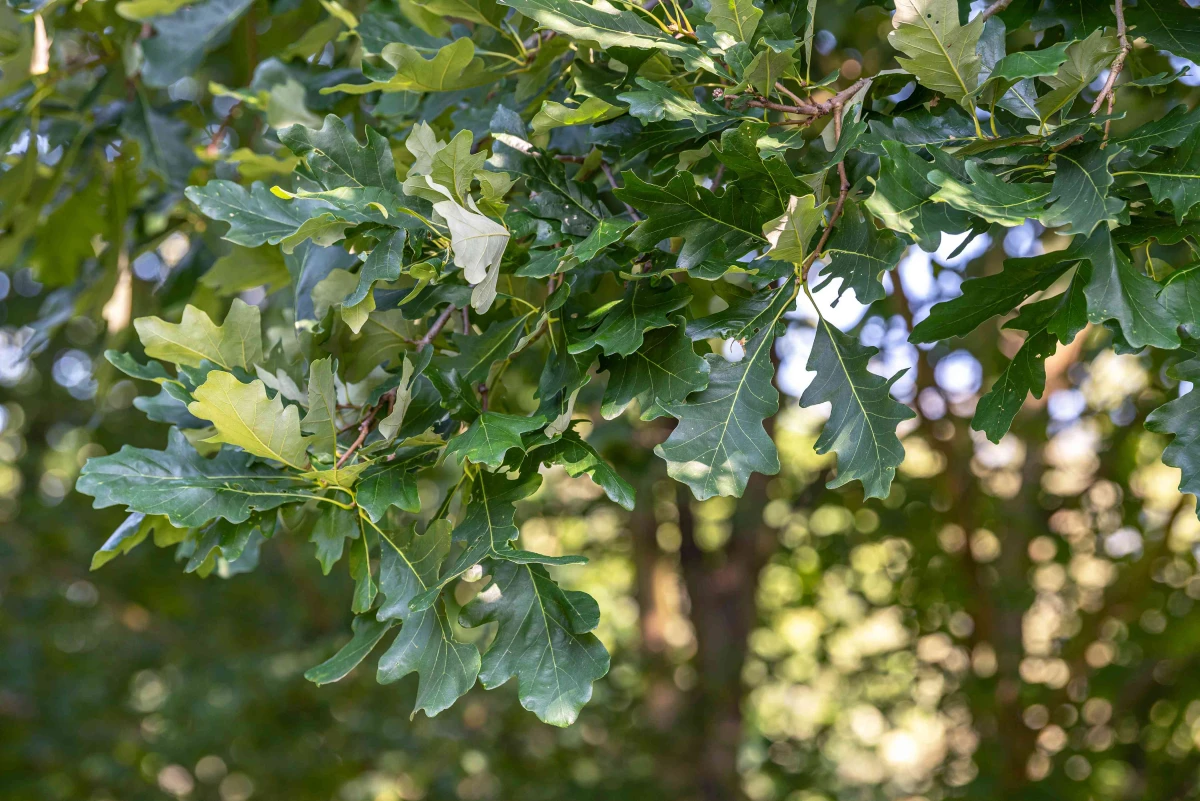
Finally, some trees are masters of strategic retreat. During a really bad drought, they might go into a temporary dormancy. You might see them drop some leaves early or just stop growing altogether to save energy and water. This is a survival move, not a sign that you’ve failed! The tree is just hunkering down and waiting for better days.
Choosing Your Tree: ‘Right Plant, Right Place’ is Everything
The most important rule in the book is ‘right plant, right place.’ A tough-as-nails tree planted in the wrong spot is doomed to struggle. So, before you fall in love with a species, you need to play detective in your own yard.
1. Get to Know Your Soil
Is your soil heavy clay that holds water forever and then bakes into concrete? Or is it sandy stuff that drains in a flash? A professional soil test is great, but you can do a simple version yourself. Dig down about six inches, put a scoop of soil in a clear jar, fill it with water, and shake it like crazy. Let it settle overnight. The sand will be on the bottom, silt in the middle, and a thin layer of clay on top. This gives you a decent idea of what you’re working with and how your soil will behave.

2. Consider Sun and Future Space
How much direct sun does the spot get? “Full sun” isn’t a suggestion; it means at least six hours of direct, unfiltered sunlight. Many drought-tolerant trees absolutely need this to thrive. Just as important is the tree’s mature size. That cute little sapling you can carry in one hand could grow to have a 50-foot canopy and a massive trunk. I’ve had to remove gorgeous, healthy trees because they were planted way too close to a house or right under power lines. Always plan for the tree’s size in 20 years, not its size today. Measure everything!
3. Know Your Hardiness Zone
The USDA Plant Hardiness Zone tells you the average coldest temperature your area experiences in winter. A tree might handle a Texas summer just fine, but it won’t survive a Minnesota winter if it isn’t rated for that cold. Quick tip: You can find your zone by plugging your zip code into the USDA Plant Hardiness Zone Map online. Drought tolerance and cold hardiness are two totally different things.
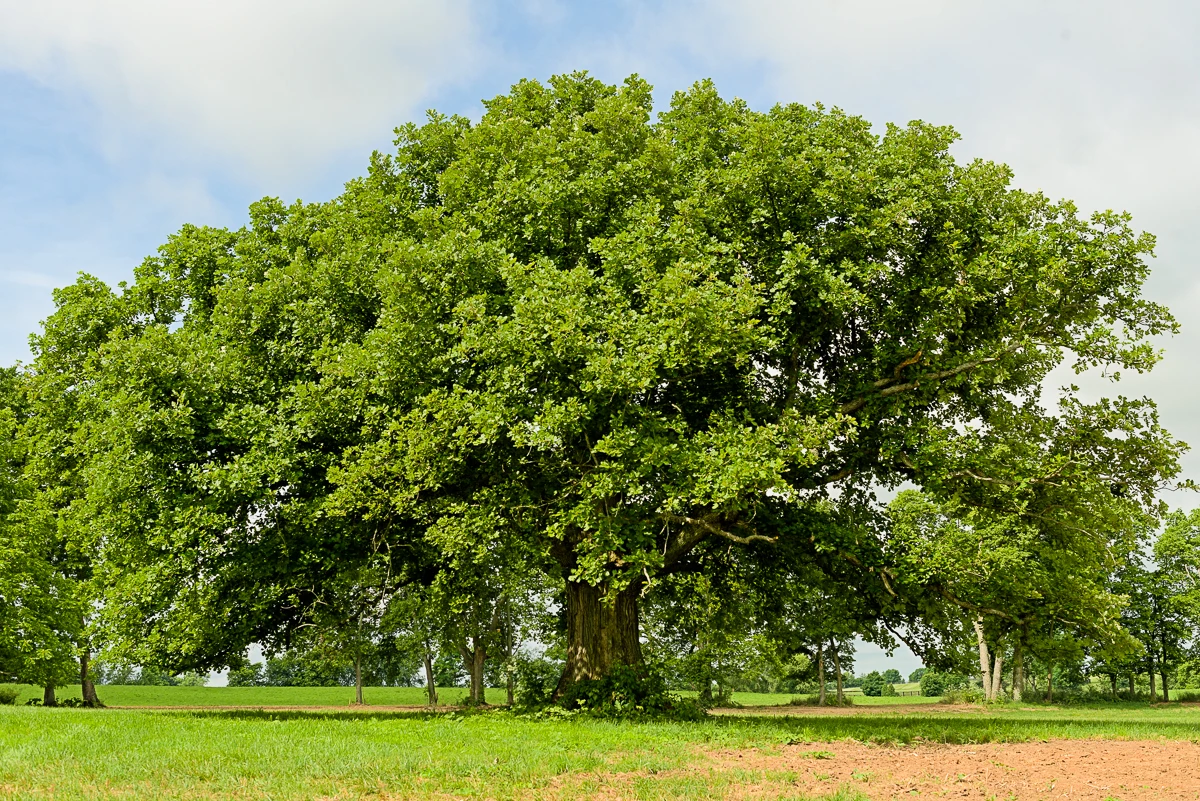
A Few Proven Performers I Trust
Okay, let’s talk trees. This isn’t just a list; it’s a look at their personalities, quirks, and needs. Every tree has its pros and cons.
The King: Bur Oak
This is the monarch of the prairie, and for good reason. It’s unbelievably tough. Once it’s established, its deep taproot makes it a champion in a drought. But—and this is a big but—it’s a long-term commitment. It grows slowly and gets absolutely massive. Don’t even think about planting a Bur Oak in a small yard. Its mature spread can easily reach 60-80 feet. It’s perfect for large properties or as a legacy tree you plant for your grandkids.
The Urban Survivor: Hackberry
If I had to pick one reliable tree for a tough city spot, it’s often the Hackberry. It’s not picky about soil, it handles pollution, and it can take both drought and the occasional flood. One thing to know: homeowners often get freaked out by little bumps that appear on the leaves. These are called nipple galls, and they are purely cosmetic. They don’t harm the tree one bit. It’s a no-fuss workhorse that provides great shade and asks for very little in return.
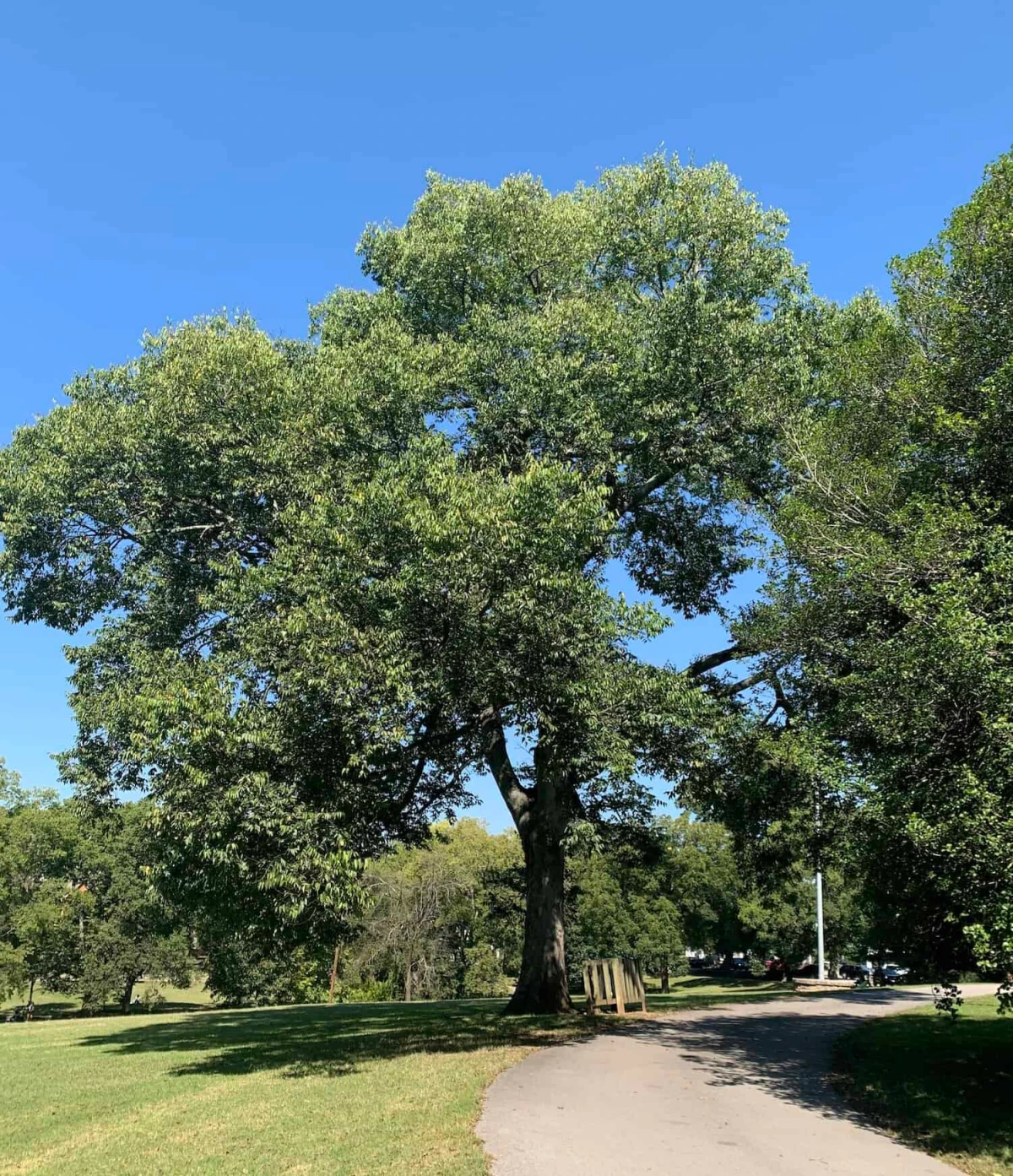
The Unique One: Kentucky Coffeetree
This tree is a standout. It has a cool, coarse look in the winter and delicate, fern-like leaves in the summer that cast a lovely dappled shade. It’s super adaptable to different soils. Heads up, though: its name comes from settlers who tried roasting the seeds as a coffee substitute, which is a terrible idea. The raw seeds and pods are toxic if eaten, so it’s a serious consideration if you have curious kids or pets. To be safe, look for a male variety, which won’t produce the messy, toxic seed pods.
The Ancient Stunner: Ginkgo
A true living fossil, the Ginkgo is famously resistant to almost everything: pests, disease, pollution—you name it. The fan-shaped leaves turn a breathtakingly pure yellow in the fall. There is, however, one MASSIVE catch. You must, must, must only plant male trees. The female trees produce a fruit that drops and rots, and to be frank, it smells like a dumpster full of spoiled butter. Reputable nurseries only sell certified male trees. If you see a Ginkgo for a price that seems too good to be true, it’s probably an unsexed seedling. Don’t take that gamble.
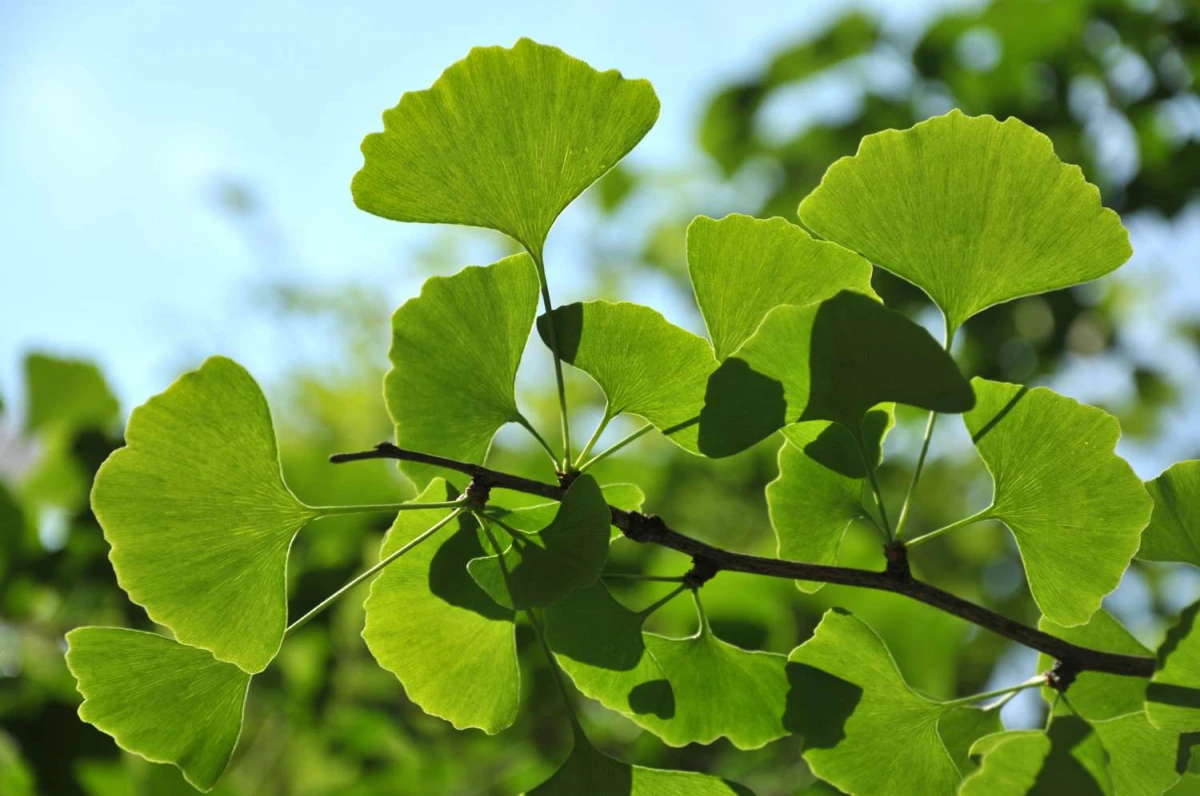
Planting Day: This is Where the Magic Happens
How you plant your tree is just as important as the tree you pick. A great planting process can literally cut the establishment time in half. But first, let’s talk timing and budget.
When to Plant & What You’ll Need
The best time to plant a tree is almost always in the fall. The soil is still warm, which encourages root growth, but the air is cool, which reduces stress on the tree. Spring is the second-best choice. Avoid planting in the heat of summer if you can help it.
Before you start, get your gear together. Here’s a quick shopping list:
- The tree itself (A 5-gallon container tree might run $50-$100; a larger B&B tree could be $250+)
- 2-3 large bags of quality wood chip or shredded bark mulch
- A good, sharp shovel
- A sharp utility knife (for dealing with roots)
- Gardening gloves
Step 1: Dig a $100 Hole for a $10 Tree
This old saying is pure gold. Your hole needs to be two to three times WIDER than the root ball, but NO DEEPER. The tree needs to sit on solid, undisturbed ground to prevent it from sinking over time. Planting too deep is one of the most common and deadly mistakes people make.
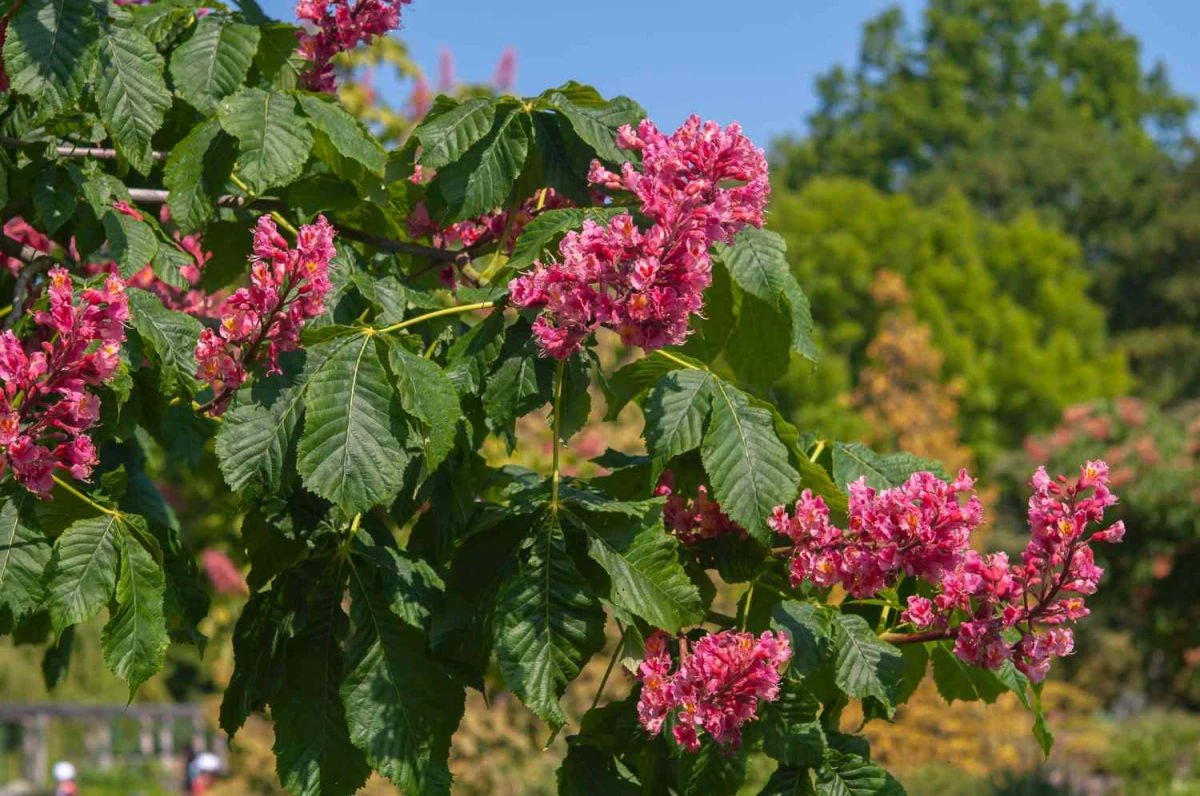
Step 2: Find the Root Flare
This is critical. The ‘root flare’ is where the trunk starts to widen out at the bottom before the roots begin. This flare MUST be at or even slightly above the surrounding ground level. You might need to gently pull some soil away from the top of the container to find it. If this flare gets buried, the trunk can rot.
Step 3: Place, Backfill, and Snip
Gently place the tree in the hole. If it’s a container tree with circling roots, use your knife to make four or five vertical slices down the side of the root ball to encourage the roots to grow outwards. If it’s a ‘balled-and-burlapped’ (B&B) tree, once it’s in the hole, REMOVE any wire basket and cut away as much of the burlap as you can. They do not decompose fast enough and can girdle the roots later on. Use the native soil you dug out to fill the hole back in. Don’t add a bunch of fancy compost; you want the roots to venture out into the real world.
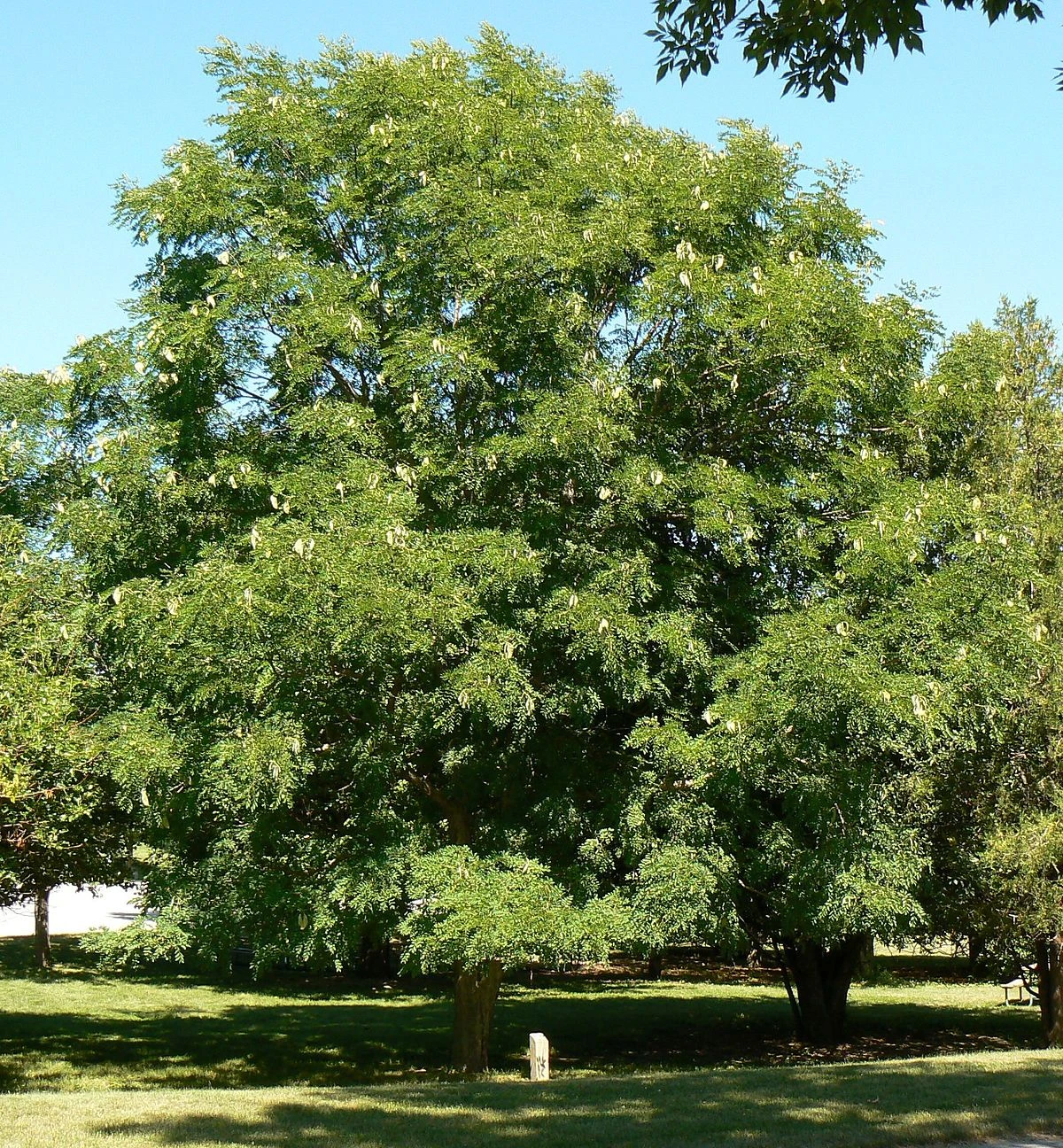
Step 4: Water and Mulch Correctly
Build a small ring of soil around the edge of the root ball to create a watering basin. Now, water it deeply. I’m talking 10-15 gallons. A great way to measure is to use a 5-gallon bucket (filled 2-3 times) or just let a hose trickle on low for about 20-30 minutes. Finish by applying a 2 to 3-inch layer of mulch in a wide circle, but—and this is important—do NOT let the mulch touch the trunk. Pull it back a few inches. We call this a “mulch volcano,” and it’s a leading cause of trunk rot.
Oh, and one more thing: The Great Staking Debate.
Should you stake your new tree? Honestly, probably not. Trees need to flex in the wind to build strong trunk tissue. Staking a tree too tightly can make it weaker in the long run. The only time to stake is if you’re in an extremely windy area or the tree is so top-heavy it can’t stand on its own. If you do stake it, use wide, flexible straps and remove them after one year.
The First Five Years: Your Investment Period
Remember, a drought-tolerant tree isn’t drought-tolerant on day one. For the first 3-5 years, it depends on you. Your goal is to water deeply but infrequently to encourage those roots to go deep. A light daily sprinkle is the worst thing you can do.
A good rule of thumb is to provide about 10 gallons of water for every inch of the tree’s trunk diameter (or ‘caliper’). But the best way to know is to just check. Stick your finger a few inches into the soil near the roots. If it’s dry, it’s time to water. As the years go by, you can water less and less often, nudging the tree toward self-sufficiency.
Stay Safe, Stay Legal, and Know When to Call a Pro
Planting a tree is a big deal, and safety comes first.
Call 811 Before You Dig. This is not a suggestion, it’s the law in most places. It’s a free service that marks underground utility lines. Hitting a gas or electric line is incredibly dangerous and expensive. Just do it.
Also, think about future conflicts. Keep trees at least 15-20 feet from your foundation and watch out for overhead lines. Don’t plant a future problem.
Finally, know when to call for backup. If you’re planting a very large tree or feel out of your depth, it’s worth hiring a certified arborist. We aren’t just ‘tree guys’; we’re trained professionals. A one-hour consultation might cost between $100 and $200, but it can save you from a multi-thousand-dollar mistake down the road. You can find a local, certified pro through the International Society of Arboriculture’s website. A little expert advice upfront is one of the best investments you can make for the future of your yard.
Inspirational Gallery
When it’s time to water, think
Over 90% of a tree’s fine, water-absorbing roots are in the top 12-18 inches of soil.
This is precisely why a 3-inch layer of organic mulch is non-negotiable for a drought-proof yard. It acts like a sponge, prevents the topsoil from baking in the sun, suppresses water-stealing weeds, and keeps the soil temperature stable, protecting those crucial surface roots from heat stress.
Should I amend the soil in the planting hole?
This is a hotly debated topic, but most modern arborists say no. Creating a super-rich, amended soil environment in the planting hole can discourage the tree’s roots from venturing out into the tougher native soil. This can lead to a weak, confined root system. It’s better to plant directly into the native soil and then top-dress the entire area with a layer of quality compost and mulch, which will gradually improve the soil for all plants in the vicinity.
The right tool for the job: A sturdy, sharp spade shovel is better than a pointed shovel for digging a proper planting hole. You want the sides of the hole to be rough and uneven, not smooth and glazed. Smooth sides, a common result of using a pointed shovel in clay soil, can act like a ceramic pot, preventing roots from penetrating into the surrounding earth.
- Reduced transplant shock and faster establishment.
- A more naturally developed root structure.
- A significantly lower price tag.
The secret? Choosing smaller, younger trees. A 5-gallon tree will often outperform a large, 15-gallon specimen within just a few years because its roots haven’t become
Embrace the beauty of silver, gray, and blue foliage, a common trait in water-wise plants. The waxy or hairy coatings that create these colors help the leaves reflect sunlight and retain moisture. Pair the silvery leaves of a Texas Olive (Cordia boissieri) with the deep green of a Desert Willow (Chilopsis linearis) for a stunning, low-water contrast that looks intentional and lush.
Check the Root Flare: Before you even leave the nursery, gently pull back some of the soil at the top of the container. You should be able to see the root flare, the point where the trunk widens and the main roots begin. If it’s buried, the tree was planted too deeply at the nursery and may have long-term health problems. Choose a different one.
Building a simple soil berm, or watering basin, around your newly planted tree is a five-minute task with a huge payoff. Create a 3-4 inch high ring of soil about 3 feet in diameter around the tree. This simple structure acts as a private reservoir, holding water and forcing it to soak down deep to the root ball instead of running off across the yard.










